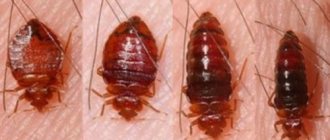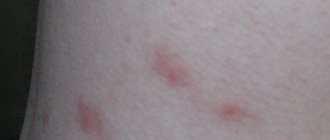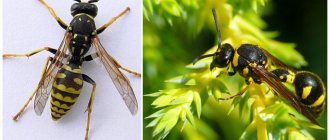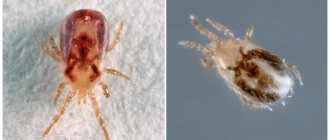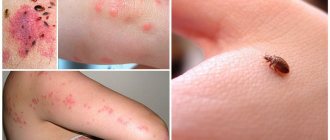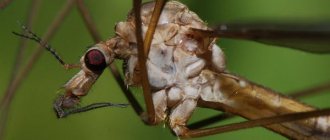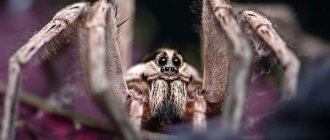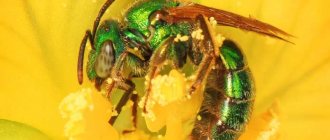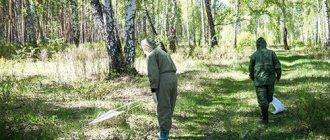Insect bites cause allergic reactions of varying degrees of intensity. Redness and swelling, swelling, and inflammation appear. There is pain, burning, itching. Types of insect bites on the skin differ in location, pain, and speed of skin recovery. A person can get hurt in his own apartment, house, or in nature. Photos of insect bites are presented below.
Mosquitoes
Small insects begin to attack at the end of May, when the air temperature approaches +20 degrees Celsius. Huge colonies live in the wild near water bodies, shady forests, as well as in basements and city parks. They enter a house or apartment through open windows and doors. You can suffer from insect bites in your own home, without leaving its walls, or on a picnic.
The moment of the bite is felt immediately or after the pest has flown away. It all depends on the pain threshold and sensitivity of the person. Who was bitten is determined by external symptoms. Mosquito attacks in most cases do not cause serious consequences and are limited to a local reaction on the skin.
- swelling;
- slight swelling;
- redness up to 1 cm in diameter;
- severe, unpleasant itching.
On a note!
Insect bites in children are more severe and go away on their own within a week or require the use of special medications. The peculiarity of mosquito bites is that they bite on open areas of the skin, leaving random marks. Photos of insect bites are presented below.
Mosquito bite
Mosquito and midge bites
Mosquitoes are temporary ectoparasites. That is, only females bite us during the breeding season. The rest of the time, like males, mosquitoes feed on flower nectar. The reaction to a mosquito bite is caused by an anticoagulant, a substance secreted by the female when she pierces the skin. It prevents our blood from clotting during absorption. A single puncture does not pose any danger; mosquitoes, like midges, are dangerous in numbers. And if the body of an adult copes in most cases, then the body of a child, which is not yet formed and weakened, can react violently to bites. More detailed information on how to protect yourself and how to treat them if you are bitten: mosquitoes and midges.
Midges
Blood-sucking creatures are black in color, up to 3 mm in size. They annoy people at the end of May, beginning of June - when the pine tree blooms. They live en masse in the wild and do not penetrate indoors. They bite during daylight hours and hide in the evening. You can get hurt in a forest, a city park, near a house where there are trees or vegetation, or in a country house.
An insect bite on human skin has characteristic symptoms:
- redness up to 0.5 cm in diameter, a dark dot in the center - dried blood;
- painful sensations;
- severe itching appears after a while;
- the bite on the human body disappears within 2 weeks.
A midge attack rarely ends in a severe allergic reaction; folk remedies and pharmaceutical preparations based on natural ingredients are used for treatment. A photo of midge bites on the skin is presented below.
Horseflies and gadflies
Horsefly on the left, gadfly on the right
If we're talking about biting flies, we can't help but mention horse flies and gadflies. Yes, these insects are biologically also flies, albeit very large ones, sometimes up to 3 cm in length.
There are more than 150 species of each of these insects, so accurately describing their appearance is not so easy. Gadflies are usually lighter in color, “short” and “fluffy”, while horseflies are darker and have a more elongated and flattened body, as well as huge eyes.
In terms of bites, horseflies are much more dangerous for humans, whose mature females require the blood of warm-blooded animals and are very active during daylight hours. Horseflies fly very quickly and can actively attack people, especially in the hottest part of the day and when the skin is moistened with water or sweat - during swimming, physical work in the air, or simply when being near bodies of water. It is also believed that these insects (like gadflies) are attracted to bright and dark colors in clothing, movement and perfumes.
Horsefly bites are very painful. Saliva containing anticoagulants and toxins is released into the injection site. Toxic substances in saliva lead to redness and painful swelling of the skin. Anticoagulants prevent blood clotting and cause prolonged bleeding from wounds that do not heal for a long time. In addition, horseflies are carriers of a number of helminths, viruses (including tick-borne encephalitis) and bacteria.
The overwhelming majority of gadflies are not blood-sucking, but are parasites of large animals - a person can suffer from these insects only if the eggs of the gadfly somehow get on his mucous membrane or under the skin. But if a female gadfly decides to pierce your skin to lay larvae, you will notice this by large swelling and redness.
What to do if you are bitten by a horsefly or gadfly? As in previous cases, wash the bite site with soap and running water, cool, and relieve itching and swelling using available means. If allergic reactions occur, use antihistamines, and in case of complications (fever, weakness, headache, diarrhea, etc.) consult a doctor.
Ants
This is the case when an insect bit, and who exactly remains to be seen. Ants do not attack people, but they can crawl into things and onto the body while in nature. It is not difficult to crush a tiny insect, followed by a painful bite and an injection of acid.
Traces from insect bites - ants, differ from others by the presence of a white formation in the center. There is a red spot around. The size in diameter does not exceed 1 cm. Severe swelling after an insect bite appears only in case of individual intolerance to ant poison. The formation on the skin occurs gradually over 1 week; to accelerate the effect, pharmaceutical preparations and folk remedies are used.
Insect bites
How bedbugs bite: symptoms and photos of bites
To understand how bedbugs bite, study the symptoms and photos of insect bites and compare the information received with what you see on yourself, your loved ones and/or pet.
- If an adult bug bites, the moment of puncture of the skin is not felt, since the insect injects an anesthetic into the skin.
- The bite begins to itch and itch about an hour after the bug feeds from it.
- The larvae do not yet have a sufficient supply of anesthetic, so their bites are always noticeable.
- If there are many bites, a dull, aching pain may appear in the area of greatest damage, as with bruises and hematomas.
- Bite marks darken over time.
- Bites can cause allergies.
An allergic reaction can manifest itself both on the skin and affect overall well-being.
- Red spots are added to the bites.
- The bitten areas swell.
- Body temperature rises.
- There is general weakness.
If allergy symptoms are severe, be sure to consult a doctor.
Fleas
A person can see for himself what the bites of insects that parasitize on the body of dogs and cats look like. Fleas live in the wild among grass, sand, and basements. Pets enter a house or apartment through cracks in the floor, doorways. They are active in the evening, but if the premises are heavily infested, they bite during the day.
On a note!
The flea bites at three points because it pierces the skin several times during one meal. The process itself may be invisible, then a small red spot appears, dried blood in the center, slight swelling, severe itching.
Bites come in varying degrees of intensity. If one individual ate, there are no serious consequences, the unpleasant symptoms disappear within a day, the epidermis is restored within a week. With numerous attacks, skin lesions lead to the formation of dermatitis and an allergic reaction. Special treatment is required. Use ointments for insect bites.
Signs of a mosquito attack
In addition to mosquitoes, there may be other insects in the house that can bite a person in a dream. Knowing what a mosquito bite looks like, you can differentiate it from a bedbug or flea bite. The degree of skin irritation as a result of an attack by bloodsuckers varies depending on age, the number of bites and the individual characteristics of the body.
Adults with developed immunity may not have any reaction at all to a single bite.
Numerous bites on human skin will look something like this.
Redness and severe itching occur due to a large amount of mosquito venom trapped in the soft tissues. The body begins to fight foreign proteins, which leads to local tissue irritation and itching. In a healthy person, bite marks go away on their own and do not require treatment.
A sign of an allergic reaction may be swollen areas of soft tissue.
On a note!
Typically, to achieve this effect, you need to scratch the bite sites.
A rash after a mosquito bite is a rare occurrence. Outwardly, it looks like nettle burns. The difference is that because of mosquitoes, the rash appears suddenly, and a nettle burn will definitely not be missed.
Mosquito bites on a person
Bees
They live from May to September, in early October they hide in nests and hives, preparing for wintering. They do not have an aggressive disposition; they bite to protect their own lives. They collect flower nectar, feed on the juices of sweet fruits, and you can get hurt while relaxing in nature or buying sweets at the market.
On a note!
It is impossible not to notice the attack of a striped bee, since severe pain is immediately felt. Even if everything happened too quickly, the person did not have time to examine the pest, you can determine who bit it by the presence of a sting. Outwardly, it resembles a saw with fine teeth - it penetrates well, but it is impossible to pull it back out.
Stinging insects inject a toxic substance that causes an allergic reaction. The bee leaves the sting, and with it part of the abdomen. While inside the wound, the “weapon” continues to pump in poison. The severity of the manifestations depends on the amount of the toxic substance, the individual characteristics of the body, age, and location of the bite. Small children and people with weakened, pathologically weak immunity suffer bee attacks with difficulty.
Bee sting
Signs of a bee sting:
- a blister with a depression in the center with a dark dot - a sting;
- redness in diameter more than 1 cm;
- swelling, edema;
- local increase in temperature in the affected area;
- pain, burning;
- As the wound heals, itching appears.
Swelling from an insect bite can spread to the respiratory system and larynx in case of severe allergies. In addition to the local reaction, within 20 minutes after a bee attack, the following appears:
- nausea;
- weakness;
- diarrhea;
- dizziness;
- fever;
- violation of movement coordination;
- difficulty breathing;
- temperature increase;
- loss of consciousness;
- pale skin;
- change in blood pressure.
With a normal immune response, bite marks disappear in 2 weeks, pain disappears in 3 days.
Bees, hornets, wasps
A bee sting is especially painful for people who are sensitive to bee venom. It can cause an allergic reaction in them, especially if there have been several bites from these insects. Closed shoes and a hat with a mosquito net will provide excellent protection.
After being bitten by these insects, the first step is to remove the sting. Apply a swab soaked in a mixture of ammonia and water (1:5) or something similar that you can find on hand to the bite site. You should immediately take an antiallergic drug and it is recommended to remain calm and drink plenty of hot water.
Wasps
The annoying striped creatures become most active in late summer and early autumn. Wasps fly en masse near ripe, rotten, fermented fruits, meat, fish, and drinks. Adults feed on juices, while larvae are fed protein foods.
They rush to attack if their own life is in danger, but they can regard any sudden human movement as a threat. Unlike bees, they do not leave stings and are able to bite several times at once. Wounds from wasp stings become swollen and inflamed. Allergies often develop with a deterioration in general well-being. The most dangerous bites are on the face, neck, and larynx.
Consequences of insect bites:
- swelling;
- redness and thickening;
- holes remain in the body where the wasp stuck its sting;
- pain, burning;
- edema.
In young children and people with an increased tendency to allergies, the temperature from an insect bite increases, weakness, nausea, abdominal pain, etc. are observed. With a normal reaction to insects, the pain goes away within 3 days, the skin is restored within a week.
Wasp sting
Important!
If a child's leg is swollen after an insect bite, you need to apply a cold compress and monitor his well-being for 20 minutes. The appearance of other alarming symptoms is a sign of a severe allergy.
What to do if you are bitten
If you do not know who bit you, then first aid is provided according to the general scheme:
- Visually inspect the wound, if there is a sting, remove it
- If there was a sting, suck out the poison (no more than 10-20 seconds)
- Disinfection: hydrogen peroxide, iodine, brilliant green. Treating the bite site
- Apply a cold compress to prevent swelling
- Take an antihistamine (anti-allergic) drug. Can be used as an antihistamine (suprastin, diphenhydramine if there are no contraindications)
- And observation, if the reaction continues, consult a doctor immediately
If the snake bite hit you directly in the ass, know that the snake that bit you was spectacled.
Ticks
They are active from March to October. They live in grass and small bushes. You are more likely to be bitten while relaxing in nature. The tick explores the body for a while, chooses the most favorable place, and then bites into it. The process of a tick bite almost always remains unnoticeable; for several days the arachnid can calmly drink blood and stick around in the body. It is discovered either by chance or itching occurs.
On a note!
Ticks have the ability to fall off on their own once they are fully saturated, but are more often discovered before this point. The head of the pest is under the skin, the body sticks out. You can pull it out yourself using tweezers, thread, or seek help from specialists.
If you couldn’t catch a tick while it was hot, bites can be recognized by the following signs:
- redness with a diameter of 1.5 cm;
- in the center there is a dark spot with dried blood;
- lump from a bite, compaction;
- inflammation;
- itching
The skin is restored without special treatment in 7 days. If the tick was a carrier of encephalitis, after 14 days your health worsens and flu-like symptoms appear. You need to immediately seek help from specialists, get tested, and be sure to report a tick attack.
Tick bite
Spiders
You can suffer from arthropods due to your own carelessness or carelessness. Spiders bite only when their own life is threatened. Humans have no nutritional value for them. Very rarely, house spiders that live in the corners of rooms, behind furniture, and household appliances are attacked; wild animals such as spiders, tarantulas, false black widows, etc. can bite.
The spider bites with two points. On the front of the head there are chelicerae with poisonous glands. The arthropod bites through the skin and injects poison. Pain appears instantly and local allergies develop.
Symptoms:
- bite two points;
- redness;
- edema;
- inflammation;
- a few days later an abscess appears after the bite, suppuration, itching.
Unpleasant sensations are present for 2-3 days, but the epidermis takes a long time to recover – up to 2 weeks. With an increased tendency to allergies, a deterioration in well-being is observed - weakness, dizziness, headache, abdominal discomfort.
Important!
The bite of a poisonous spider disrupts the functioning of the heart and respiratory system, and increases blood pressure. Without qualified assistance, a person dies from suffocation or heart attack.
Spider bite
Lice
There are several types of lice - head lice, clothing lice, pubic lice. The latter look like a small crab, are localized on the pubis, are rare - among people leading a depraved lifestyle, homeless people. Clothes live in human underwear, bedding, and bite more often at night. After insect bites, numerous small red spots and minor swelling appear. Head lice are more likely to attack children. They live on the head. They are the most common parasite.
Symptoms of head lice:
- severe itching;
- spots on the skin, inflammation;
- dermatitis from bites with prolonged infection;
- the presence of nits on the hair.
Action must be taken immediately, as insects multiply quickly. They use folk, professional remedies. In the absence of treatment for pediculosis, the development of dermatitis, nervous system disorder, and deterioration in general health are observed.
How dangerous are insect bites?
Mosquitoes, bees, midges and other individuals can cause not only a serious allergic reaction in the body, but also cause other pathological changes in a person’s well-being due to a bite. For example, mosquitoes are considered carriers of dangerous diseases. such as malaria, zika fever, etc.
photo of a bee sting
Experts recommend not to be tolerant of mosquitoes. Under no circumstances should you allow an insect bite if it can be prevented. When, after contact with an individual, a person’s temperature begins to rise, fever, and increased sweating appear, it is necessary to urgently seek medical help.
Midges appear in early summer and make themselves known through itching and swelling. An allergic reaction to a bite is due to the fact that the midge's saliva is poisonous. Itching and swelling may accompany a person for several weeks. The midge is dangerous because it causes a strong burning sensation at the bite site. The victim begins to scratch the affected area, which often leads to an infectious infection.
Ticks are considered the most dangerous insects. Not all species of individuals have been fully studied; their bites can lead to irreparable consequences for the body, including disability and death. Most often, people are susceptible to an illness that can cause a negative disorder of the nervous system - tick-borne encephalitis. The disease is very dangerous. Doctors and infectious disease specialists recommend timely vaccination to prevent infection.
Wasps, hornets, and bees are famous for their ability to cause severe allergic reactions to their stings. It is manifested by pain, itching and severe swelling. The hornet is dangerous to humans; it can inject poison during contact, which will subsequently lead to a skin burn. The result of such exposure to the insect sometimes becomes pulmonary edema, shortness of breath, and suffocation.
Experts advise treating insects more responsibly, taking all preventative measures and providing first aid to the victim. Measures taken in time can save a person’s life.
In order to react correctly to the situation, you need to know the distinctive signs of insect bites.
Bed bugs
The bites of different insects differ from each other, but in some ways they have similarities. A bug attack resembles a mosquito attack; swelling, redness, a blister, and severe itching appear. But bed bugs infest all year round, regardless of the temperature outside the window.
Insect bites
On a note!
Bites of domestic insects - bedbugs, initially appear with a certain frequency every 10-14 days. As the number of parasites increases, the interval shortens. With mass infection, new traces appear every night.
Bed bugs are active in the dark and attack a sleeping person. A round spot remains on the skin, accompanied by severe itching. The main symptom is the location of the wounds in the form of a path. The insect bites up to 5 times during one meal, the bites are placed in pairs at small intervals. With a large number of bedbugs, the spots merge with each other.
flies
The zhigalki that appear in an apartment or house towards the end of summer bite. The bite instantly causes pain and discomfort. Swelling, redness, and compaction appear. There is no itching, no severe allergies occur. Unpleasant symptoms disappear within a few days without special treatment, and the epidermis recovers quickly.
Important!
The danger of a bite lies in the possibility of infection. Flies are carriers of tularemia and anthrax. To destroy pests, chemical and mechanical methods are used. After a bite, you must immediately provide first aid, rinse, and disinfect the wound.
Mosquito attacks on children
Mosquito bite
For a child with an immature immune system, the consequences of a mosquito attack are usually more serious. This is what a mosquito bite in a child who is not prone to allergies will look like in a photo, even if it was the only insect.
An infant has almost complete immunity, and many medications cannot yet be used. Very young children are swaddled, so in newborn children all the bites will be concentrated on the face.
To prevent mosquito bites in infants, it is best to hang a mosquito net on the stroller and crib. If the baby is nevertheless bitten, it is necessary to consult an allergist as soon as possible. Mosquito bites in a child without a developed immune system can cause severe allergies. An example photo of mosquito bites in children below is a fairly mild allergy.
